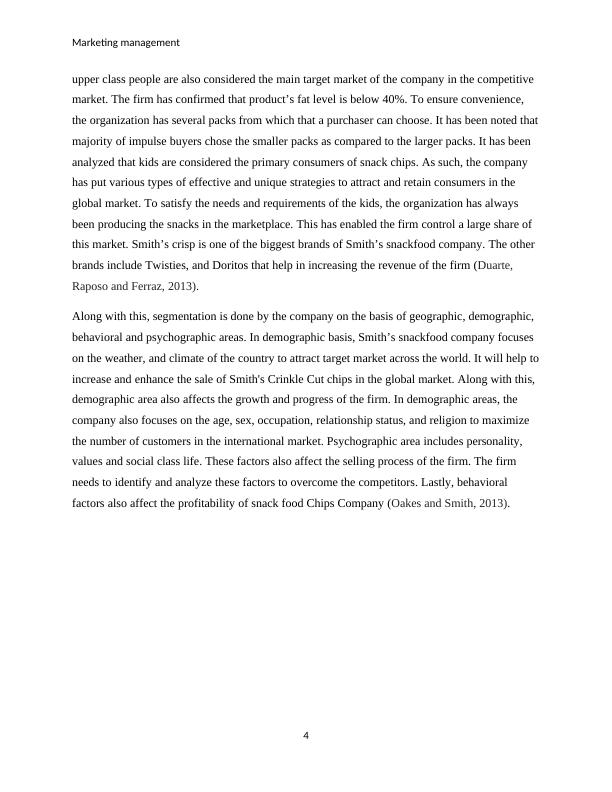Marketing Management Introduction 3 Section 1. Product Development, Pricing and Distribution Plan 8 Integrated Marketing Communication Plan 10 Section 3. Marketing Strategy 8 Product Development, Pric
19 Pages4248 Words402 Views
Added on 2021-05-31
About This Document
Marketing management Marketing management Introduction 3 Section 1.Segmentation and brand strategy 3 Consumer segmentation 3 Primary and secondary market 5 Positioning/perceptual map 6 Brand strategy 7 Section 2.Objectives 8 Marketing objectives 8 Financial objectives 8 Section 3. Marketing program 8 Product development, pricing and distribution plan 8 Integrated marketing communication plan 10 Section 5.Sheduling, forecasting and control 11 Marketing scheduling and budget 11 Forecasting 11 Control 11 Conclusion 11 References 12 Appendices 15 Introduction The main aim of this
Marketing Management Introduction 3 Section 1. Product Development, Pricing and Distribution Plan 8 Integrated Marketing Communication Plan 10 Section 3. Marketing Strategy 8 Product Development, Pric
Added on 2021-05-31
ShareRelated Documents
End of preview
Want to access all the pages? Upload your documents or become a member.
MKTG 4491: Business-to-Business Marketing
|40
|8707
|35
Marketing Plan for Nutri-Crisp
|11
|1759
|211
Marketing Planning for Snack Food Operation by Nestle
|9
|1869
|47
Marketing Plan for Arnott's Biscuits Limited
|14
|4137
|157
Marketing Strategy and Plan of Nestle
|13
|3604
|220
Marketing Plan of Marks & Spencer
|17
|4420
|58




